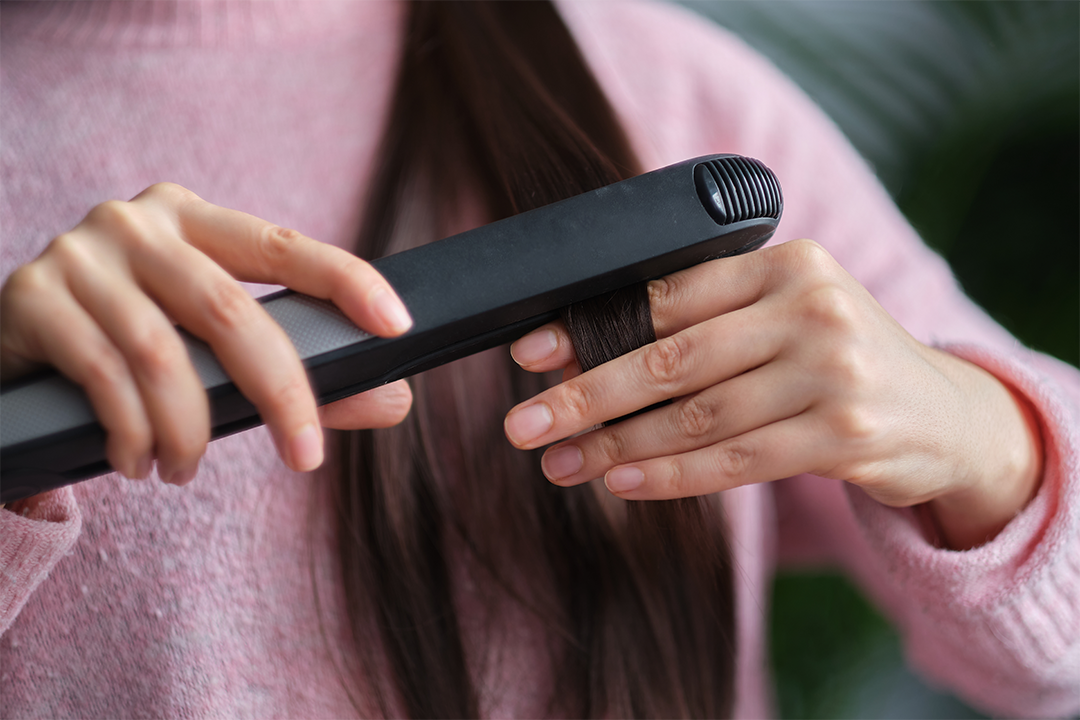
Do heated hair stylers affect hair drug testing and hair alcohol testing?
By Matthew Langley BSc (Hons) – Reporting and Authorization Scientist
Hair styling technology is a key consideration when carrying out drug and alcohol testing. Hair straightening has become a commonly used hair styling tool for many individuals. Several studies have shown that thermal straightening can have an influence on the concentration of the alcohol marker ethyl glucuronide (EtG) and drugs of abuse in hair; some compounds may increase in concentration while others may decrease in concentration.
Thermal hair straighteners can reach very high temperatures and can thus damage the hair strands. The affect can vary depending on the natural biology of a person’s hair, some may already have damaged hair even before using thermal hair straighteners. The degree of damage is also influenced by hair density, hair thickness, and/or hair colour. Therefore, it is not possible to determine to what extent the use of thermal straighteners has affected a result, if at all.

Several studies have shown that thermal straightening of hair may decrease concentrations of THC (cannabis), cocaine and the cocaine metabolite cocaethylene (CE) in hair; however, it can conversely increase the concentration of the cocaine metabolite benzoylecgonine (BZE).
One compound of interest that has shown to be influenced by the use of thermal straighteners is anhydroecgonine methyl ester (AEME), which is a widely used marker for ‘crack’ cocaine use. AEME is a by-product produced as a result of the thermal degradation of ‘crack’ cocaine when it is heated, such as when it is being smoked or inhaled as vapor.
However, as AEME is produced under extreme heat, it has been shown that AEME may be produced by thermal hair straightening where cocaine is also present in the hair. As such, the presence of AEME in hair should not be used as an irrefutable proof that a person has used ‘crack’ cocaine in cases where thermal straighteners have also been used.
It should be documented during a hair collection whether someone has used thermal hair straighteners, and this should be considered in the interpretation and reporting of the results detected in the hair. At Lextox our collectors therefore ask all donor’s whether or not thermal hair straighteners have been used.
Conclusion
The use of thermal hair straighteners can have an impact on the alcohol marker EtG and drugs / metabolites in hair; possibly decreasing or increasing the levels observed, depending on many biological factors.
Whether testing for alcohol or testing for drugs, donors should be mindful of these affects if they are due to embark on a program of testing.
By Matthew Langley
Reporting and Authorization Scientist
Matthew has a BSc with Honours in Forensic Science, as well as being a member of the Society of Hair Testing.
Matthew joined Lextox six years ago and has over 13 years’ experience in the analysis of drugs of abuse across a range of biological matrices, including hair, saliva, urine, and blood. He has vast experience in analysing a large number of samples and interpreting toxicological data from hair cases using knowledge derived from study of the medical/scientific literature and casework. Matthew is also trained to give evidence in court.

Published 12/06/2024. All information correct at time of publication.





